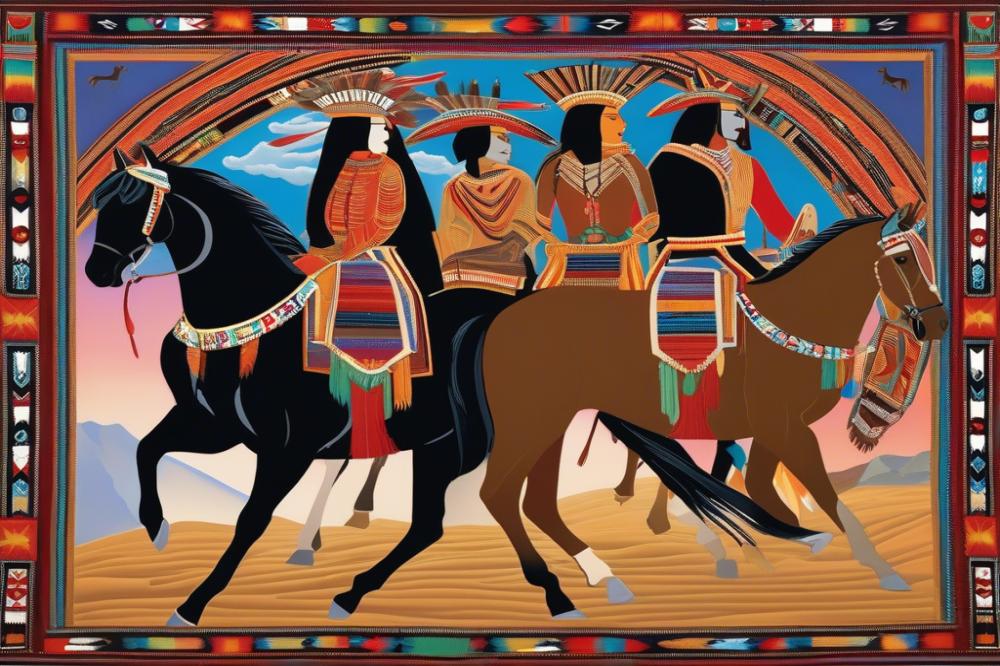The Role of Horses in Native American Traditions
The arrival of Horses marked a turning point for many Indigenous cultures across North America. Initially, these majestic animals were introduced by Spanish explorers in the late 15th century. The impact on Native American societies was profound and far-reaching. Soon after their introduction, horses began to reshape not only everyday life but also cultural practices and social structures.
These animals enhanced mobility significantly, allowing tribes to travel greater distances. They became vital for hunting, trade, and warfare. With increased access to resources, various groups experienced notable changes in their lifestyles. Plains tribes, in particular, adapted quickly. Hunting buffalo became easier, leading to a more efficient means of sustenance and trade.
Horses also transformed social dynamics within communities. Skills associated with riding were often shared, creating a sense of camaraderie and competition. Rides in traditional ceremonies became common, enriching the cultural fabric of many tribes. They provided a means to showcase wealth, strength, and bravery, directly tying into the values held by diverse Native American peoples.
Beyond practical uses, horses also held spiritual significance. Many tribes developed myths and stories that included these creatures, recognizing their power and role in the natural world. This connection reinforced the bond between humans and nature, a core element of Native American Traditions. Their presence was woven into the very fabric of life, symbolizing freedom and adventure.
cultural significance of Horses
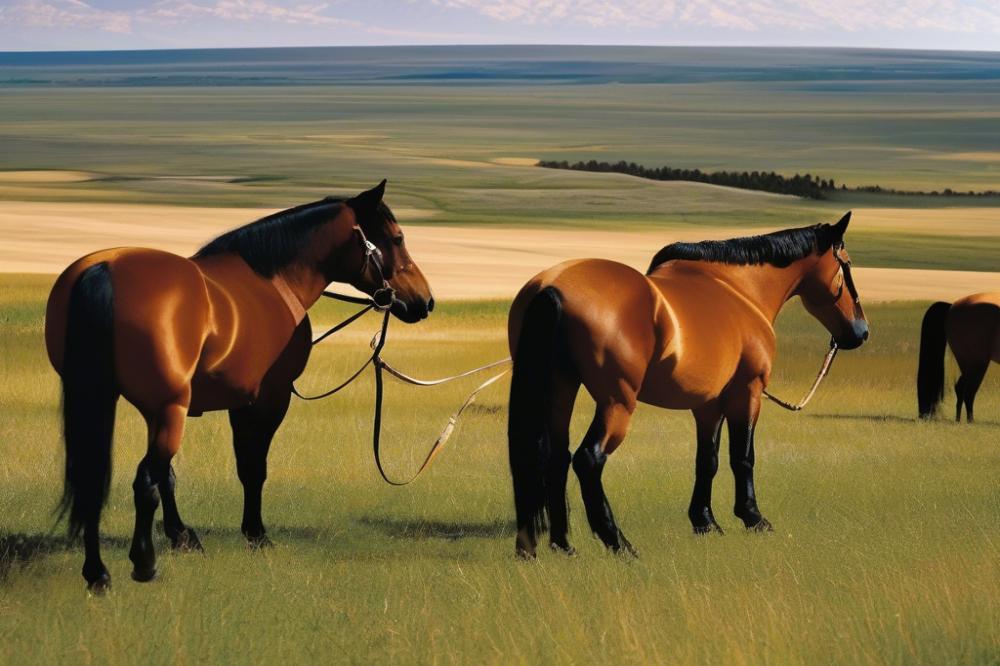
In many Native American cultures, these animals serve as vital symbols of wealth and status. Ownership often indicates a person’s prosperity. Communities place great value on the number and quality of these creatures. This perception transcends mere economics; it reflects a deep-rooted connection to tradition and heritage.
They play a critical role in fostering community cohesion and identity. Traditional gatherings and ceremonies often feature these animals prominently. Festivals might include races or demonstrations to showcase skills. Such events strengthen ties among community members and celebrate shared values. Connection to these animals can enhance a group’s sense of belonging.
Geography significantly influences how tribes utilize these animals. For example, plains tribes often relied on them for hunting and travel across vast distances. In contrast, those living in mountainous regions might use them differently due to the terrain. Adaptations based on environment ensure that each community maximizes their potential. Accessibility to resources shapes practices and rituals related to care and utilization.
Spirituality and Horses
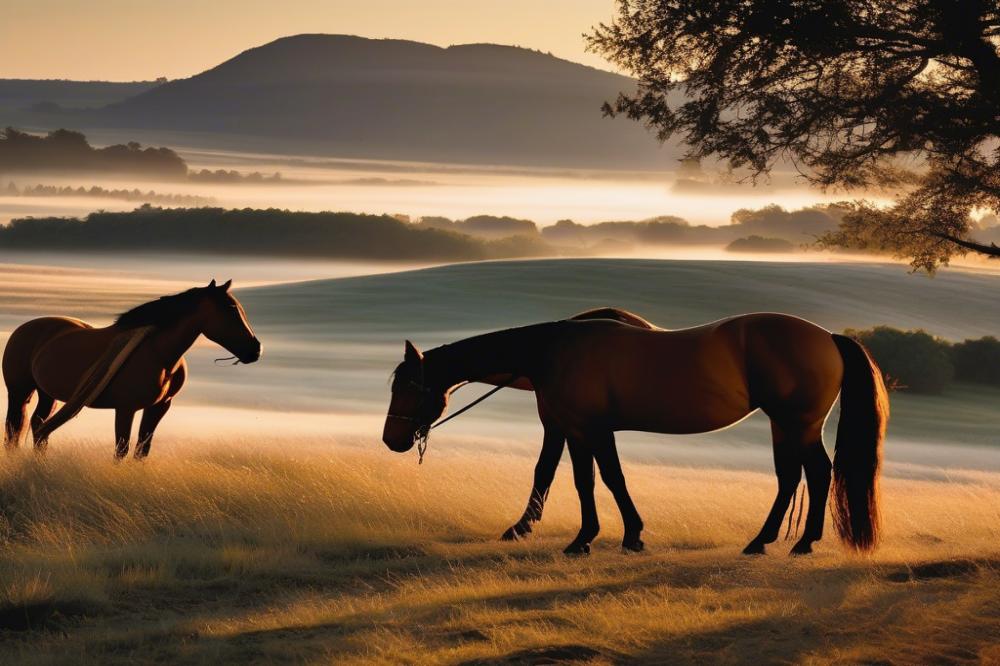
In Native American spirituality, the connection between humans and horses runs deep. These animals hold a significant place in various beliefs and practices. Many tribes perceive them as powerful beings, embodying strength and freedom. For some, they are not merely creatures but are sacred partners in life’s journey.
Myths and legends often feature horses in symbolic roles. They are seen as symbols of travel and transition, navigating both physical and spiritual realms. For instance, in some traditions, a stallion represents bravery and courage. Meanwhile, a mare may signify nurturing and community. These narratives inform the way various tribes view life and their existence within it.
A fascinating aspect lies in the idea of horses as spiritual guides. Some indigenous cultures believe these animals serve as messengers from the spirit world. They help individuals connect with ancestors and the cosmos. When someone seeks guidance, a horse might appear in visions, offering wisdom or direction. Such experiences reinforce the animal’s role as a bridge between worlds.
Connecting with a horse can also symbolize healing and personal growth. Many Native Americans see these interactions as powerful learning moments. Through cultivating relationships with the animal, individuals gain insights into themselves and their surroundings. This bond promotes understanding and respect for nature and its cycles.
The role of horses extends beyond the physical. They often reflect the inner journey of the individual. This connection adds richness to cultural practices and is evident in ceremonies. Through songs, dances, and stories, the presence of horses resonates deeply in communal gatherings, unifying people in shared beliefs.
Horses in Hunting Practices
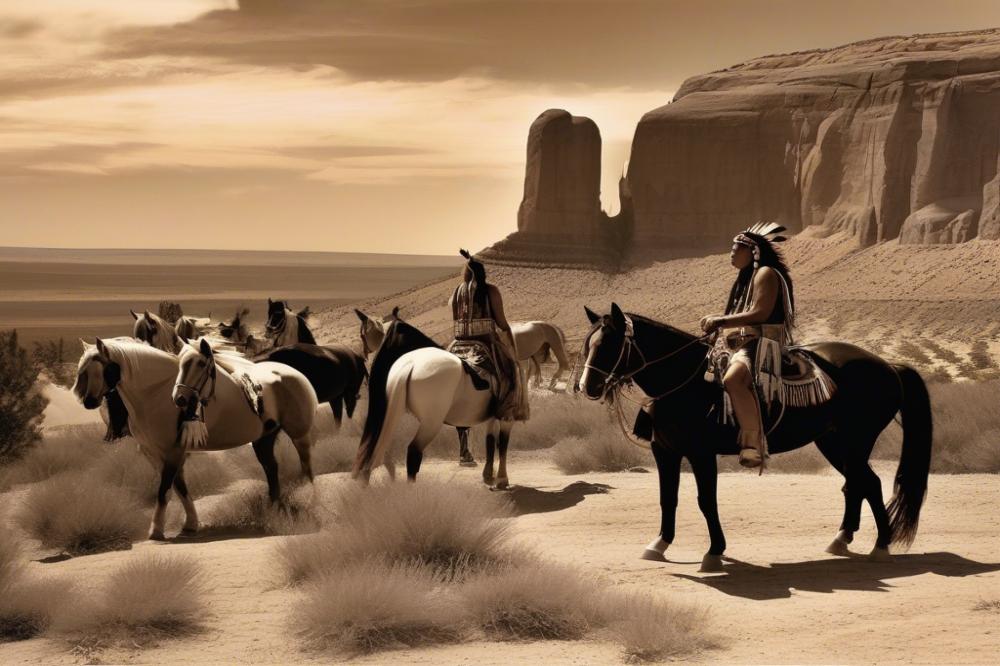
Horses played a vital role in hunting practices among Native American tribes. They helped hunters pursue larger game such as buffalo and elk. Without these animals, hunting would have been much more difficult. The speed and agility of horses allowed hunters to cover vast areas in search of prey.
Diverse techniques emerged for hunting on horseback. Riders learned to control their mounts with skill and precision. Often, hunters would ride alongside herds, keeping a steady pace. Using their horses, they would drive animals into traps or into narrow canyons, making it easier to capture them. Some tribes developed a unique style called “buffalo riding,” where hunters would approach close enough for a clean shot.
These animals became essential partners for Native Americans. Trust between riders and their mounts was crucial during hunts. Successful hunts depended on the ability of horses to navigate rough terrain and remain calm during a chase. They helped transport meat and hides back to the village after a successful hunt. Overall, they were just as important as the hunters themselves.
Transportation and Mobility
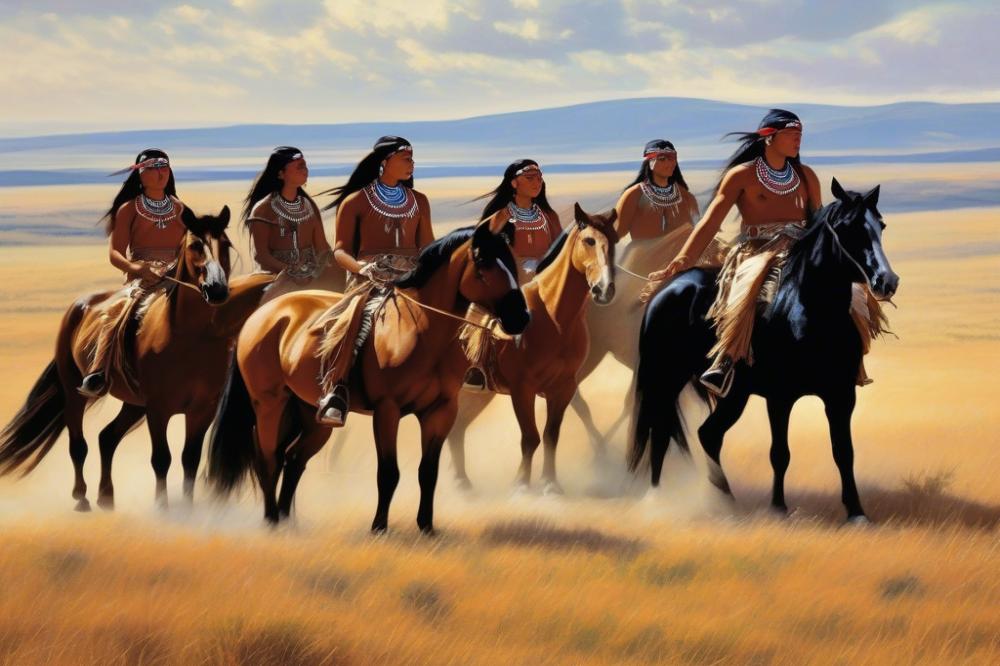
For many Native American tribes, horses served as the primary means of transportation. They enabled people to travel great distances, making it easier to hunt and gather. Movement across large territories became less challenging. This change greatly impacted the daily lives of tribal members.
Trade networks expanded significantly after the introduction of these animals. Tribes began to exchange goods more efficiently. This increase in mobility fostered intertribal relations. Different groups could now meet more often, leading to cultural exchanges and new alliances.
Settlement patterns also shifted because of horses. Previously, many tribes were more limited in their locations due to walking distances. With equine companions, some groups migrated to areas that were once too far away. This change allowed them to explore new hunting grounds and resources.
The movement of tribes often reflected their changing needs. As they became more mobile, it was easier to adapt to environmental conditions. The ability to cover long distances quickly helped sustain their way of life. Notably, these adaptations also influenced social structures within the tribes.
In summary, the introduction of horses changed the landscape of Native American life. Transportation became a crucial aspect of their societies. Trade flourished, and settlements transformed, showing how interconnected these tribes became. Each of these developments played a vital role in their history and practices.
Storytelling and Horses
Oral traditions play a significant role in Native American cultures. Stories passed down through generations often include animals as key characters. One common figure in these narratives is the horse. These stories showcase the deep connection people had with this animal, which was integral to their way of life.
Symbolism emerges vividly in narratives featuring equines. A horse might represent freedom, strength, or even a bridge between the physical and spiritual worlds. In various tales, the animal holds unique powers or serves as a companion to heroes. Their presence in stories can convey important lessons about bravery or respect for nature.
Influence reaches beyond simple entertainment. Narratives contribute heavily to cultural identity. They reinforce values and traditions that bind communities together. When people share stories about horses, they are also sharing a part of their history. Thus, these tales help to remember the past while shaping the future.
Many tribes use storytelling to pass down knowledge about the natural world. As the listeners hear tales, they learn to appreciate the bond between themselves and their surroundings. This connection enriches their understanding of nature, ecology, and the role that these animals played. Stories about horses can inspire a sense of unity among listeners, highlighting shared experiences and cultural pride.
In a world where change is constant, these stories also adapt. New generations may interpret the old tales in various ways. Yet, the core values remain intact. By sharing these narratives, Native American tribes maintain their cultural essence while allowing room for interpretation and growth. Each storytelling session is a journey, ultimately leading to a deeper appreciation of both history and heritage.
Rituals and Ceremonies Involving Horses
Horses have held a special place in the spiritual lives of many Native American tribes. They are often seen as companions and guides during important rituals. Various ceremonies showcase their significance and deep connection to the people.
In healing ceremonies, the presence of these animals can symbolize strength and resilience. Participants might use horse imagery or even include the animal in the ritual itself. This connection can help individuals find peace and comfort during times of struggle.
Rites of passage frequently include horses, marking a person’s transition into adulthood. During these ceremonies, young people may ride horses to symbolize their journey. These experiences create lasting memories and strong community bonds.
Community life is enriched by activities centered around horses. Celebrations often include racing or other horse-related events that bring people together. These gatherings strengthen relationships and create a sense of unity among tribe members.
The value of horse-related ceremonies extends beyond spiritual activities. They play a role in teaching younger generations about heritage and tradition. Elders share stories that highlight the importance of these animals in their culture.
Ultimately, horses are not just creatures; they represent a link to the past and a guide for the future. Their involvement in rituals and ceremonies shows how intertwined they are with Native American identity. Respect for these animals runs deep, echoing the rich history and traditions among various tribes.
Community and Heritage Associated with Horses
Gatherings often revolve around these majestic creatures. Powwows, rodeos, and equestrian events draw communities together. These occasions serve not only for entertainment but also reinforce cultural ties. Families and friends unite to celebrate their shared identity through traditions centered around them.
For many tribes, the bond with horses symbolizes their heritage. Stories passed down through generations reflect this deep connection. Skills related to horse management and riding are often taught to younger members. Learning these skills becomes a rite of passage, helping to shape cultural identity.
In modern contexts, the significance remains strong. Contemporary Native American communities embrace their history while adapting to current times. Events today still honor traditional practices but may also address modern issues. This blend allows communities to express their cultural pride and resilience.
Connection to the past informs current identity. Horses embody more than a mode of transport; they represent strength and freedom. For many, participating in events linked to them fosters a sense of belonging. Proud displays of horsemanship echo the values of loyalty and bravery.
Younger generations actively engage in these traditions. They learn the importance of the bond between people and horses within their culture. Such participation helps ensure that these practices persist. By maintaining these connections, communities forge pathways to a vibrant future rooted in their legacy.
Closing Thoughts on Indigenous Cultures and Their Bond with Horses
The relationship between horses and Native American peoples illustrates a rich tapestry of cultural significance. These animals played various roles, from vital partners in hunting and warfare to symbols of spirituality and freedom. Emotions connected to horses resonate deeply within many Indigenous traditions. They served not only as a means of transportation but also as a central element in social rituals and community events.
Today, this enduring legacy remains visible. Many tribes continue to honor their historical connections with these magnificent creatures. Equine events, traditional dances, and storytelling often feature the horse as an important symbol. Such practices highlight the lasting impact of equine companionship in shaping identities and traditions. Various Indigenous cultures still organize rodeos and races, fostering community spirit and preserving heritage.
Recognizing the importance of these animals goes beyond mere appreciation. Understanding their roles invites a deeper exploration of Native American ways of life. Horses are intertwined with traditions that emphasize respect for nature and spiritual teachings. Many Indigenous peoples view their relationship with these animals as part of a broader ecological awareness. This connection exemplifies how culture and nature coexist harmoniously.
Ultimately, appreciating the bond between Indigenous cultures and horses enriches our understanding of history and tradition. These animal companions embody resilience, strength, and the spirit of freedom. They remain powerful symbols that link past, present, and future within Indigenous communities. Acknowledging this unique connection encourages a more profound respect for cultural traditions throughout the world.

